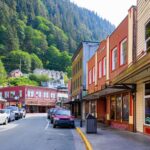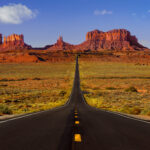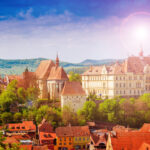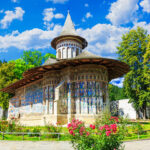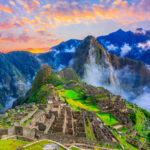The big picture
The five-day road trip from Las Vegas to the Southwest National Parks is a ride through some of the most spectacular landscapes in the United States. It’s a journey that promises to be as colorful and varied as the regions it covers.
From the profound depths of the Grand Canyon to the towering mesas of Monument Valley and the sheer cliffs of Zion, each park has its own unique allure. The added charm of Bryce Canyon’s hoodoos—tall, thin spires of rock—rounds out the trip with a geological exclamation point.

You will need to be comfortable with a brisk pace, as this itinerary is ambitious. The distances between each destination are significant, necessitating early starts and late evenings to make the most of the available daylight hours. Pre-booking accommodations and tours is a must, especially for Antelope Canyon, which is a high-demand location. Flexibility is also crucial, as the whims of weather and road conditions—or the simple desire to linger a bit longer in a particularly enchanting spot—could necessitate on-the-fly adjustments.
By the Numbers:
- 4.5 hours: Initial drive from Las Vegas to the Grand Canyon.
- 5: Number of iconic Southwest landmarks visited.
- 2.5 hours: Post-sunset drive to Page, AZ, from Grand Canyon.
- 3.5 hours: Longest single stretch of driving from Monument Valley to Zion.
- 12+ hours: Total estimated time for tours and exploration at the parks.
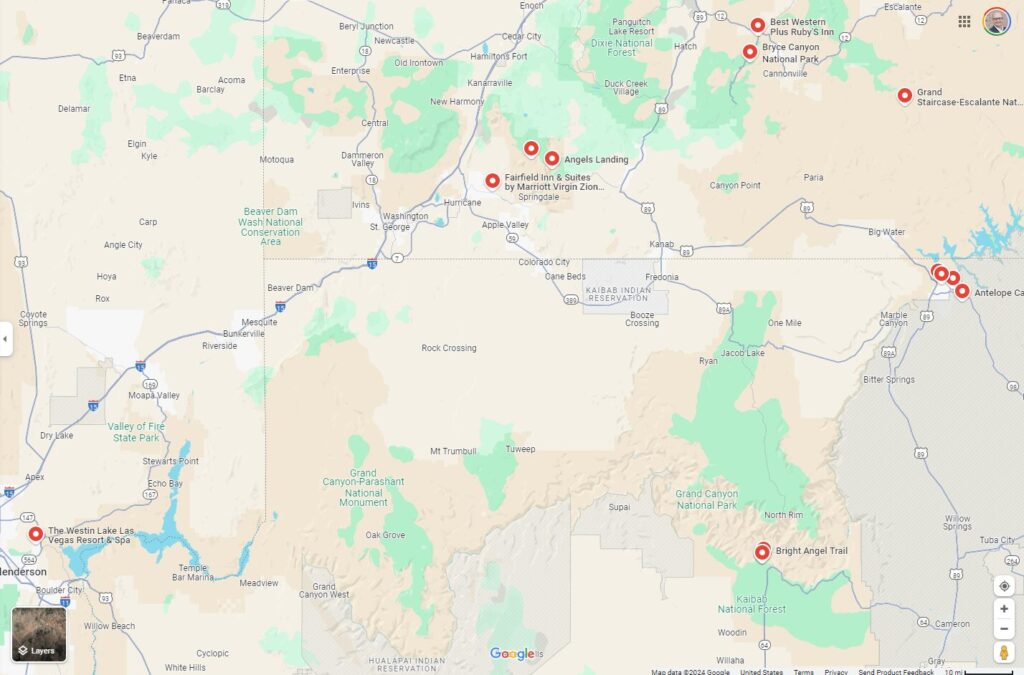
Google Maps link here https://maps.app.goo.gl/BRSvX6PYF2ZsUHex7
More details: Crafting an engaging article about this road trip will require a narrative that captures the exhilarating pace and the exquisite exhaustion that comes from immersing oneself in so much natural beauty in rapid succession.
Day 1: Las Vegas to Grand Canyon to Page
The trip begins with the urban desert of Las Vegas, a place where the lights never dim, setting out for the Grand Canyon, a site where nature’s grandeur is timeless. After a half-day drive and a quick lunch, your readers will be greeted by the canyon’s expansive views. The evening’s sunset paints the ancient rocks in shades of fire before the journey continues to Page for the night.

If you’re planning a trip to Page, Arizona, you absolutely can’t miss out on the stunning beauty of Antelope Canyon. This place is like something out of a dream, with its narrow passageways and incredible sandstone walls that have been carved over thousands of years. There are actually two parts to explore: Upper and Lower Antelope Canyon, and trust me, both are worth your time.
Let’s start with Upper Antelope Canyon, which the Navajo call “The Place Where Water Runs Through Rocks.” It’s super easy to get to and perfect if you’re into photography. The light beams that shine down from above, especially during summer, create the most amazing patterns and colors. The walk is pretty easy, so it’s great for everyone, regardless of age or fitness level. As you stroll through, you’ll be blown away by how the light and shadows dance on the canyon walls.
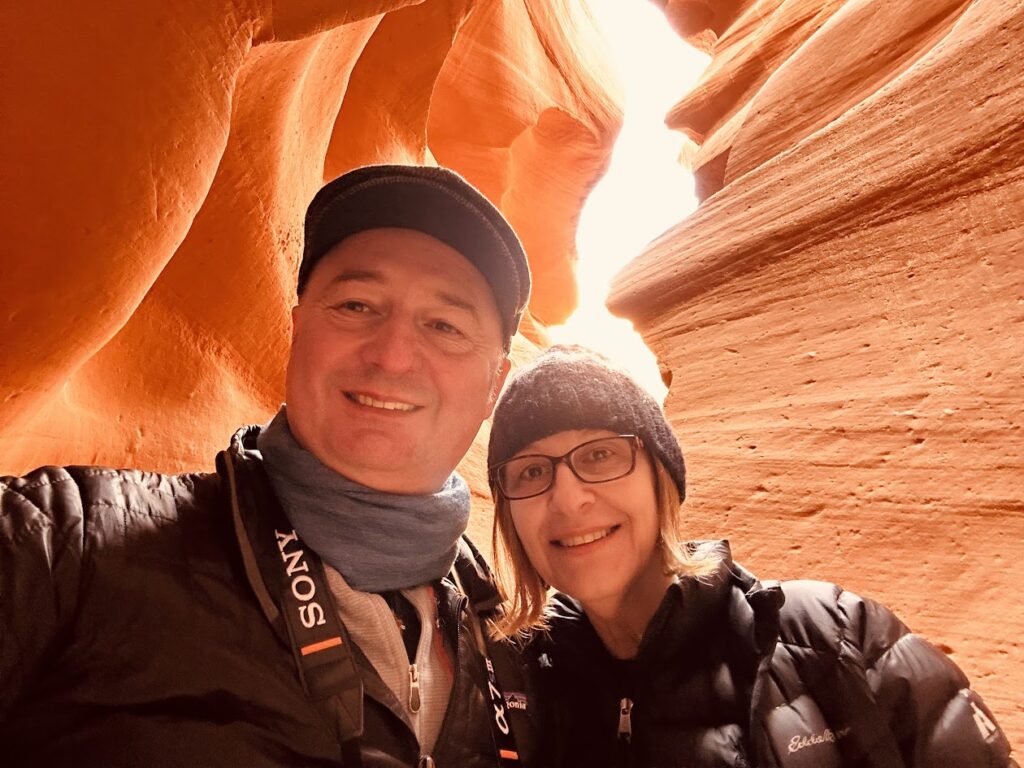
Now, if you’re up for a bit more adventure, head over to Lower Antelope Canyon, also known as “Spiral Rock Arches.” This one is a bit more physically demanding with ladders and tighter spaces, but it’s so worth it. The rock formations are insane, with all these twists and curves that show just how powerful Mother Nature can be. The descent and the winding paths make for a really intimate and thrilling experience.
You’ll need to book a guided tour to visit either section since Antelope Canyon is on Navajo land. The guides are awesome—they not only keep you safe but also share cool stories and facts about the canyon’s history and cultural significance. Pro tip: book your tour in advance because spots fill up fast, especially during peak season. And if you’re a shutterbug, try to time your visit for the best lighting conditions, especially in the Upper Canyon.
So, what do you need to bring? Comfortable shoes, plenty of water, and an open mind ready to be blown away by nature’s artistry. Antelope Canyon is a must-see, and whether you’re a seasoned traveler or just looking for a fantastic day trip, this place will leave you speechless.
Day 2: Page to Monument Valley
Antelope Canyon’s narrow corridors, illuminated by beams of light, provide a visual feast in the early morning, followed by the crescent curve of Horseshoe Bend. A brief drive takes your readers to Monument Valley, where the land tells stories, and the vistas seem straight out of a Western film, culminating in a sunset that silhouettes the buttes and spires.
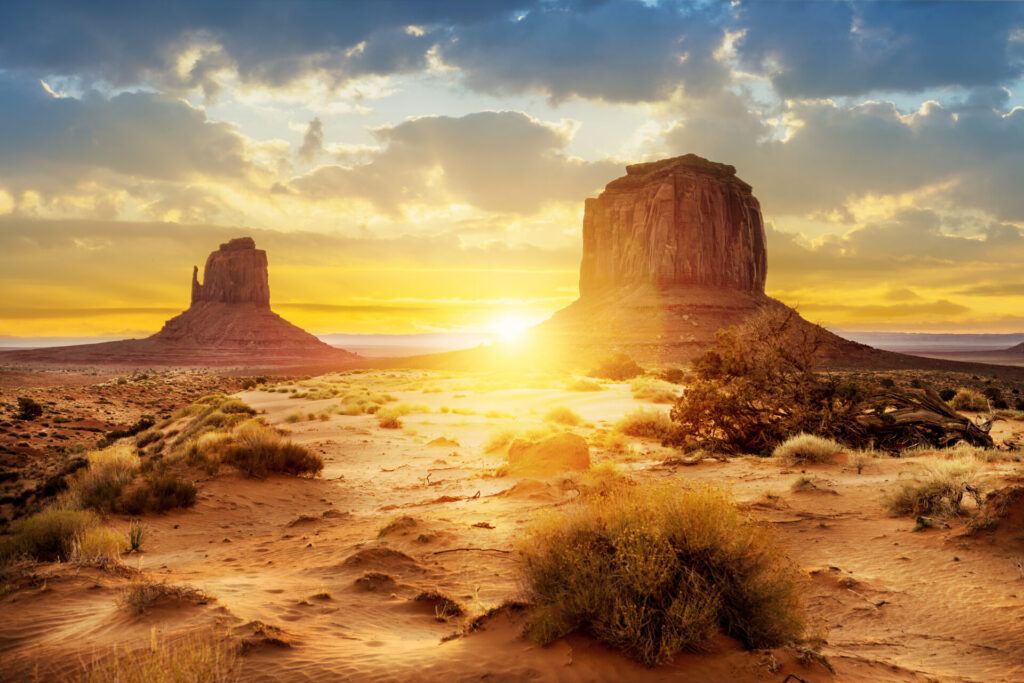
This iconic landscape, straddling the Arizona-Utah border, is like stepping into a classic Western movie—with its towering red sandstone buttes and wide-open vistas, it’s truly a sight to behold.
When you first arrive, you’ll probably recognize the scenery from countless films, commercials, and photos. But nothing beats seeing it in person. Start your visit at the Monument Valley Navajo Tribal Park Visitor Center, where you can get your bearings and pick up some local insights. From there, the 17-mile Valley Drive is a must-do. This self-guided loop takes you right into the heart of the valley, offering up-close views of famous formations like the Mittens, Three Sisters, and John Ford’s Point. The road is unpaved, so a vehicle with good clearance is ideal, but even a standard car can handle it with a bit of caution.
For a more in-depth experience, consider booking a guided tour with a Navajo guide. These tours often take you to areas not accessible on the standard route and provide a rich cultural context that brings the landscape to life. You’ll hear stories and legends that have been passed down through generations, adding a layer of meaning to the stunning visuals around you.
If you’re into photography, Monument Valley is a dream come true. Sunrise and sunset are particularly magical times, with the changing light casting dramatic shadows and highlighting the vibrant colors of the rock formations. Don’t forget to bring your tripod and wide-angle lens to capture the full grandeur of the scenery.
While you’re there, why not stay a night at The View Hotel? This place offers rooms with private balconies that overlook the valley, giving you a front-row seat to one of the most spectacular views on Earth. Waking up to a sunrise over Monument Valley is an experience you won’t soon forget.

A few tips: Bring plenty of water, sunscreen, and a hat, as the sun can be intense. And remember, you’re on Navajo land, so be respectful of the local customs and environment. Monument Valley is more than just a pretty backdrop; it’s a place of deep cultural significance and natural beauty.
Day 3: Monument Valley to Zion
Morning brings a Monument Valley sunrise that is worth the early wake-up. Optional tours can offer intimate views of the valley before the trip moves on to Zion. This park’s towering cliffs and canyons are a hiker’s paradise, offering a quieter end to an active day.

If you make it here, there are two hikes I highly recommend: Angel Landing and The Narrows.
Zion National Park – Angel Landing
Nestled within the heart of Zion National Park, Angels Landing is a breathtakingly beautiful yet challenging hike that has captivated adventurers for decades. As you embark on this iconic trail, the sheer cliffs and rugged terrain provide a thrilling prelude to the panoramic views that await at the summit. The journey begins at the Grotto Trailhead, where the well-maintained West Rim Trail winds its way through a series of switchbacks known as Walter’s Wiggles, showcasing the park’s stunning sandstone formations and vibrant desert flora.
As the trail ascends, the landscape transforms, offering glimpses of the Virgin River far below and the towering canyon walls that define Zion’s majestic scenery. The final stretch to Angels Landing is not for the faint of heart, featuring a narrow ridge with steep drop-offs on either side. Chains bolted into the rock provide a measure of security, but the path demands careful footing and a steady nerve. This adrenaline-pumping segment culminates in a rewarding experience that few other hikes can match.
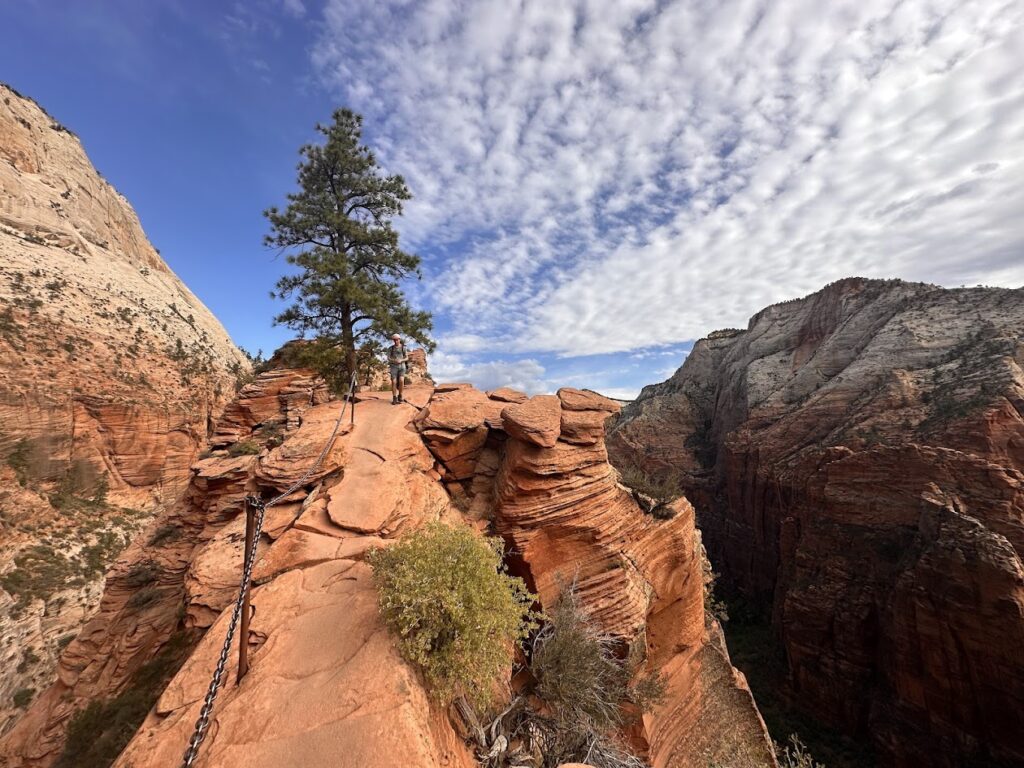
Reaching the summit, hikers are greeted with a 360-degree view that feels almost otherworldly. The vast expanse of Zion Canyon unfolds beneath you, with its contrasting hues of red rock, green vegetation, and the blue sky creating a striking tapestry. This vantage point, perched nearly 1,500 feet above the canyon floor, offers a serene and awe-inspiring perspective on the natural beauty and geological wonders of Zion National Park. Whether you’re an experienced hiker or an adventurous traveler, the journey to Angels Landing is an unforgettable experience that leaves a lasting impression on the soul.
For those planning their visit, it’s essential to come prepared. Early morning starts are recommended to avoid the midday heat and crowds. Proper footwear, plenty of water, and a good level of fitness are crucial for tackling this strenuous hike. As with any adventure in nature, respect for the environment and safety precautions are paramount. Angels Landing is more than just a hike; it’s a testament to the grandeur of nature and the indomitable spirit of those who seek to explore its heights.

The Narrows
The Narrows offers an unparalleled hiking experience that immerses adventurers in the very heart of the Virgin River. This unique trail is not defined by traditional paths but by the river itself, which carves its way through towering sandstone walls, creating a mystical corridor that beckons to be explored. Starting at the Temple of Sinawava, the Riverside Walk provides a gentle introduction to the hike, leading you to the point where the real adventure begins: wading into the cool, flowing waters of the Virgin River.
As you venture deeper into The Narrows, the canyon walls rise dramatically on either side, at times narrowing to just 20 feet apart, while soaring nearly a thousand feet above. The interplay of light and shadow on the water-worn rock creates an ever-changing, mesmerizing environment that feels like stepping into another world. Each bend in the river reveals new wonders, from serene pools and cascading waterfalls to lush hanging gardens clinging to the canyon walls. The hike is a sensory feast, with the sound of rushing water and the tactile experience of traversing the riverbed adding to the enchantment.

Hiking The Narrows is as much about the journey as it is about the destination. Unlike other trails, there is no single endpoint; rather, hikers can choose how far they wish to venture, with the dramatic Wall Street section being a popular turnaround point for day hikers. For those seeking an even greater challenge, the 16-mile top-down route from Chamberlain’s Ranch offers an epic, full-day adventure that demands careful planning and permits. Regardless of the chosen route, the experience of hiking through The Narrows is a testament to nature’s raw beauty and power.
Preparation is key to a successful and enjoyable hike in The Narrows. Given the potential for flash floods, checking weather conditions and water levels before setting out is crucial. Proper gear, including sturdy water shoes, a walking stick for stability, and dry bags to protect valuables, enhances the experience. The cold, clear waters can be refreshing in the summer heat, but in cooler months, a wetsuit or drysuit is advisable. Respecting the delicate ecosystem and adhering to Leave No Trace principles ensures that this extraordinary natural wonder remains pristine for future adventurers. Hiking The Narrows is more than just a trek through water; it’s an immersive encounter with the timeless beauty and dynamic forces of Zion National Park.
Biking in the Zion National Park
Exploring Zion National Park by e-bike offers a unique and exhilarating way to experience the park’s stunning landscapes and diverse ecosystems. E-biking combines the joy of traditional cycling with the added boost of an electric motor, making it accessible for riders of all skill levels. As you pedal along the scenic byways, the park’s towering sandstone cliffs, verdant valleys, and the serene flow of the Virgin River unfold before you in a way that’s both intimate and invigorating.
One of the most popular routes for e-biking in Zion is the Pa’rus Trail, a paved path that meanders along the Virgin River from the South Campground to Canyon Junction. This trail is perfect for e-biking, offering easy access to some of Zion’s most iconic views without the strain of steep climbs. The gentle ride allows you to fully appreciate the park’s flora and fauna, with opportunities to spot mule deer, wild turkeys, and a variety of bird species. The Pa’rus Trail also connects to the Zion Canyon Scenic Drive, which, during the busy season, is closed to private vehicles, making it a peaceful and scenic route for cyclists.
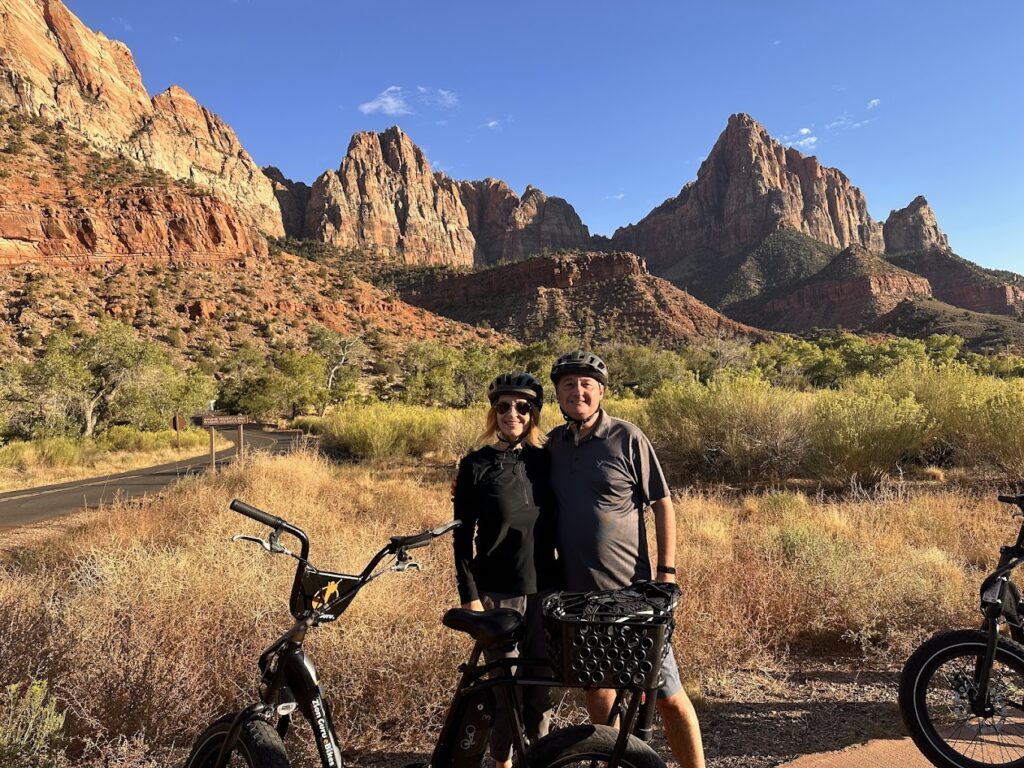
E-biking also opens up the possibility of exploring more remote areas of the park. The Zion-Mount Carmel Highway, for example, offers a challenging yet rewarding ride with its series of switchbacks and the iconic Zion-Mount Carmel Tunnel. As you ascend, the panoramic views of the canyon below and the diverse geological formations make every turn a visual feast. The electric assist of the e-bike helps manage the climb, allowing you to focus on the stunning surroundings and the fresh mountain air.
Safety and preparation are key to a successful e-biking adventure in Zion. Wearing a helmet, carrying plenty of water, and being aware of your battery life are essential. It’s also important to stay on designated trails and respect the park’s natural environment. E-bikes provide a sustainable way to explore Zion, reducing your carbon footprint while enhancing your connection to the park’s breathtaking landscapes.
Whether you’re gliding along the gentle curves of the Pa’rus Trail or tackling the more demanding routes, e-biking in Zion National Park offers a blend of adventure and tranquility. It’s a perfect way to cover more ground, discover hidden gems, and immerse yourself in the unparalleled beauty of one of America’s most cherished national parks.
Day 4: Zion to Bryce Canyon
A full morning in Zion could mean conquering the trails that offer panoramic views of the park’s red and white canyons. By afternoon, the road to Bryce Canyon beckons, where a quick hike through the otherworldly amphitheater at sunset provides a spectacular close to the day.

Bryce is a wonderland of unique rock formations called hoodoos, natural amphitheaters, and some of the most stunning vistas you’ll ever lay eyes on. Here are some of the best things to see and do while you’re there:
1. Sunrise Point
Start your day early at Sunrise Point for an unforgettable experience. As the sun rises, it casts a warm glow over the hoodoos, creating a magical, almost otherworldly atmosphere. It’s a fantastic spot for photography or just soaking in the beauty of the moment.
2. Bryce Amphitheater
The Bryce Amphitheater is the park’s main attraction, featuring the highest concentration of hoodoos. You can get amazing views from several vantage points, including Sunset Point, Inspiration Point, and Bryce Point. Each offers a unique perspective of the amphitheater, so try to visit them all if you can.
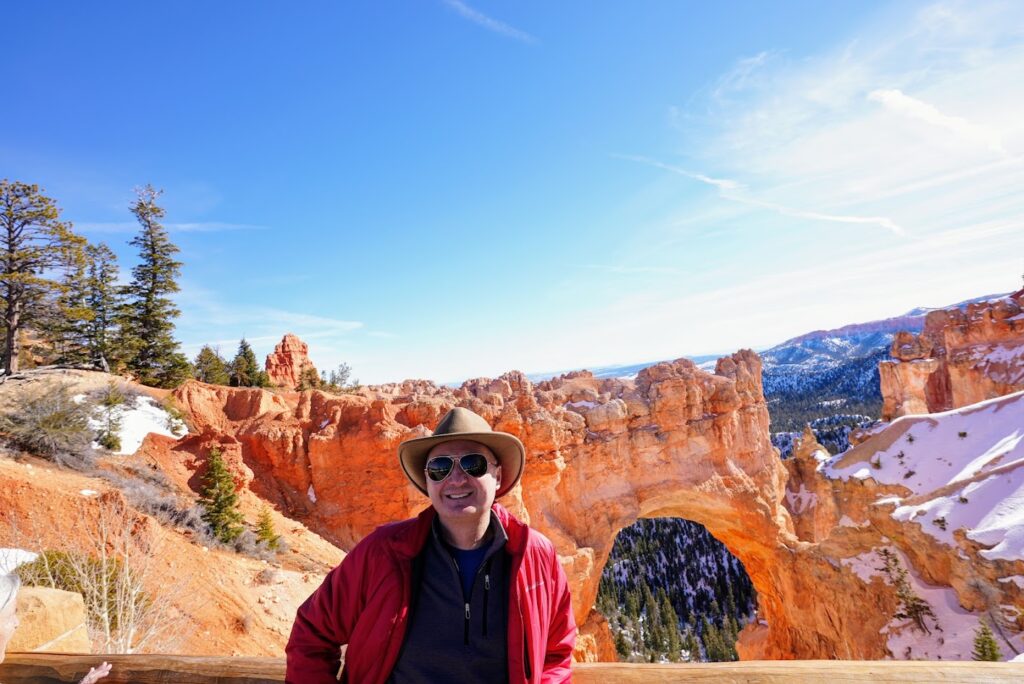
3. Navajo Loop Trail
For a more up-close experience, hike the Navajo Loop Trail. This moderate 1.3-mile loop takes you down into the heart of the amphitheater, passing through iconic formations like Wall Street and Thor’s Hammer. The switchbacks can be a bit challenging, but the views are totally worth it.
Day 5: Bryce Canyon to Las Vegas
The final day allows for an optional early hike in Bryce Canyon. The return to Las Vegas may be punctuated by a detour through Dixie National Forest or Cedar Breaks National Monument, with the journey ending back in the city that never sleeps.
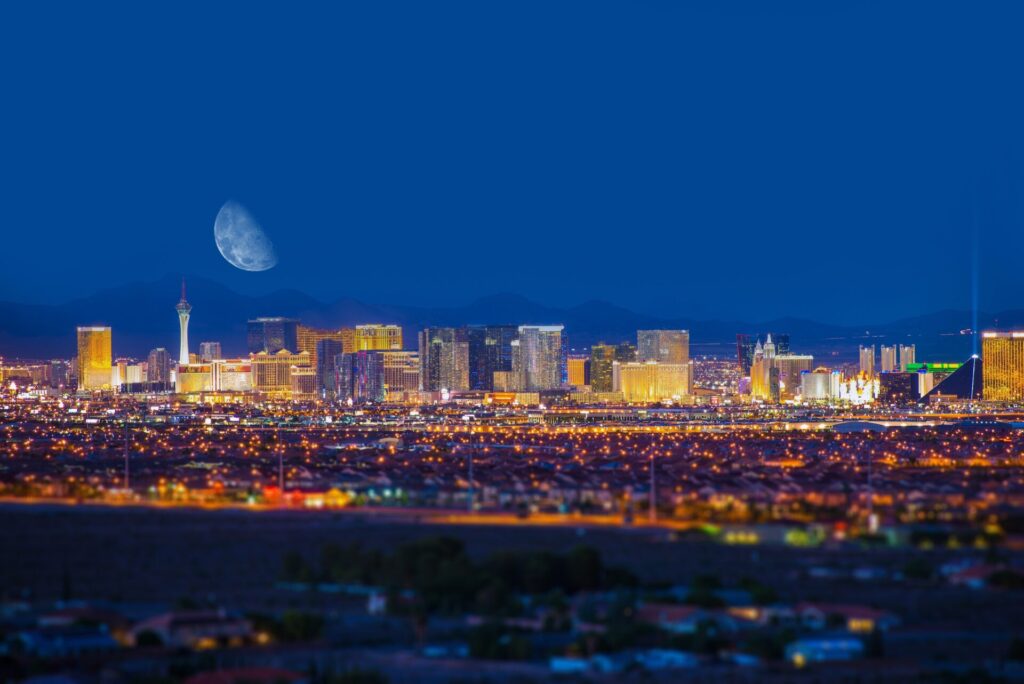
The road between each of these destinations is as much a part of the experience as the parks themselves. Each stretch of highway brings its own landscapes and micro-adventures, from roadside diners to unexpected scenic overlooks.
Are you tired of traveling to the same old European destinations like France, Italy, or Spain? If you’re looking for a unique and diverse travel experience, consider the hidden gems of the A Country A Month series, waiting to be explored. The author is an avid photographer and traveler. His favorite travel companion is his vintage leather-bound journal, in which he sketches and writes about his adventures.



